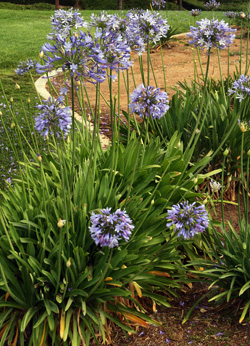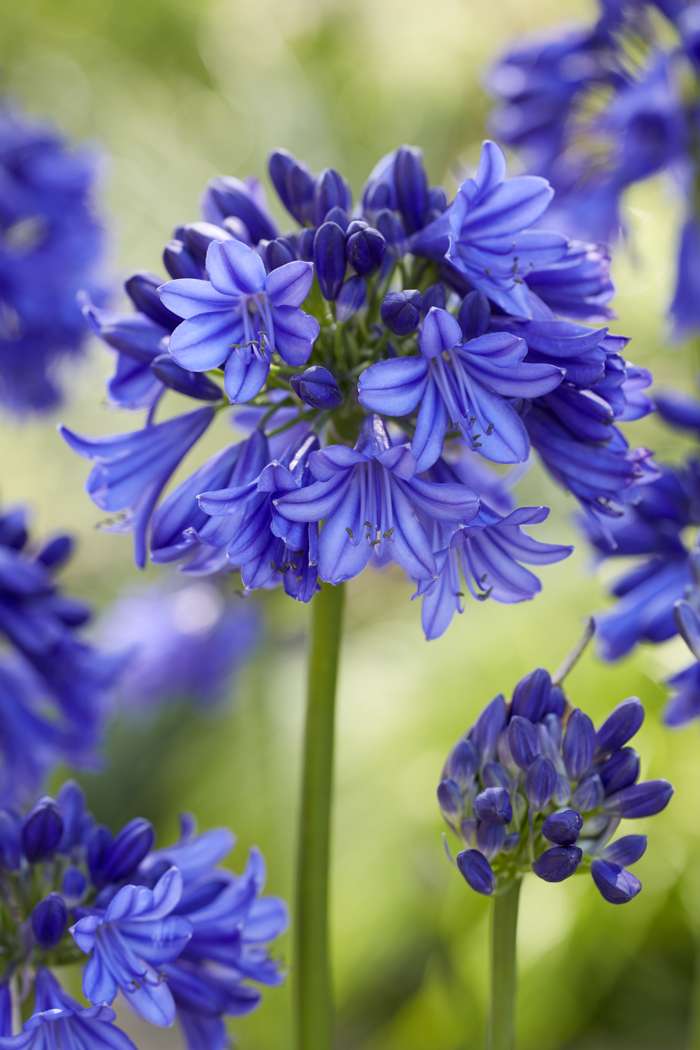Exactly how to Plant and Maintain Agapanthus in Your Garden
Exactly how to Plant and Maintain Agapanthus in Your Garden
Blog Article
Understanding the Art of Agapanthus Care: Essential Actions for Healthy Growth and Vibrant Flowers
In the realm of gardening, the cultivation of agapanthus stands as a gratifying endeavor for those who look for to support these elegant blooming plants. With their striking flowers and elegant foliage, agapanthus has caught the focus of gardeners worldwide. However, achieving optimum development and vivid blooms requires a nuanced technique that incorporates numerous vital actions. From choosing the appropriate selection to grasping trimming methods, the journey in the direction of cultivating flourishing agapanthus plants is multifaceted and holds the vital to unlocking the complete potential of these botanical treasures.

Selecting the Right Agapanthus Range

When selecting the ideal Agapanthus range for your garden, think about factors such as climate suitability, bloom color, and growth routine. Agapanthus, typically called Lily of the Nile or African lily, is available in a variety of colors varying from tones of purple and blue to white. Pick a bloom shade that matches your existing garden combination to create a harmonious landscape. Additionally, take into consideration the climate in your area to guarantee the Agapanthus selection you select can flourish in your specific problems. Some ranges are a lot more forgiving of cool temperature levels, while others like warmer climates. Comprehending the growth practice of various Agapanthus varieties is important for proper positioning within your yard. Some ranges have a clumping development behavior, ideal for boundaries or containers, while others have a more spreading nature, ideal for ground cover or mass growings. By thoroughly examining these variables, you can pick the best Agapanthus range to boost the charm of your yard.
Perfect Growing Problems
Considering the optimal ecological requirements is necessary for effective Agapanthus growing. Agapanthus plants are delicate to cool temperature levels and must be protected from frost throughout winter months.
To make certain healthy and balanced growth and lively blooms, plant Agapanthus light bulbs at a depth of about 2-4 inches and area them 8-12 inches apart. Adding raw material, such as compost, to the soil can enhance water drainage and fertility, promoting robust origin development. Mulching around the base of the plants assists keep moisture and suppresses weed growth. Routine watering is essential, especially throughout the growing season, to maintain the soil continually wet however not saturated.
Watering and Feeding Tips
Preserving proper dampness degrees and giving crucial nutrients are key aspects in the care routine for Agapanthus plants. When it comes to sprinkling Agapanthus, it is vital to strike a balance. These plants favor continually damp browse around here dirt yet are prone to root rot if overwatered.
Fertilizing Agapanthus is necessary for promoting healthy development and prolific blossoms. Apply a well balanced plant food, such as a 10-10-10 formula, in the very early springtime as brand-new growth emerges. By following these watering and feeding tips, you can guarantee your Agapanthus plants thrive and produce dynamic, durable blossoms.
Pruning Methods for Agapanthus
Pruning Agapanthus plants at the appropriate times and with proper techniques is critical for preserving their health and wellness and advertising optimum growth and flowering. The ideal time to prune Agapanthus is in late winter months or early spring before new development emerges.
Deadheading spent blossoms can additionally redirect the plant's power right into producing even more flowers instead than establishing seeds. recommended you read If you want to collect seeds for proliferation, leave some blossoms to mature and dry on the plant.
Keep in mind to use clean, sharp devices to make exact cuts and lower the threat of introducing diseases. Agapanthus. Routine trimming will aid keep your Agapanthus looking cool and healthy and balanced while making sure a plentiful display of gorgeous blossoms
Dealing With Typical Insects and Diseases
After ensuring proper pruning techniques for Agapanthus, it is necessary to address typical pests and diseases that can affect the health and vitality of these plants. One usual insect that affects Agapanthus is the Agapanthus gall midget.
Furthermore, Agapanthus plants can endure from root rot if they are planted in poorly draining soil. By being watchful and taking punctual activity versus illness and bugs, you can assist your Agapanthus plants grow and generate dynamic flowers. Agapanthus.

Final Thought
To conclude, grasping the art of agapanthus care involves choosing the appropriate range, providing suitable planting conditions, appropriate watering and fertilizing, ideal trimming methods, and attending to usual pests and conditions. By following these crucial steps, you can make sure healthy and balanced development and vivid blooms for your agapanthus plants. Remember to regularly monitor and keep your plants to promote their general well-being and longevity.
To make certain healthy development and vivid blossoms, plant Agapanthus bulbs at a depth of concerning 2-4 inches and space them 8-12 inches apart. By complying with these watering and fertilizing tips, you can ensure your Agapanthus plants flourish and produce dynamic, resilient blossoms.
One typical bug that influences Agapanthus is the Agapanthus gall midget. In addition, Agapanthus plants check this can suffer from origin rot if they are grown in inadequately draining soil. By adhering to these crucial actions, you can make sure healthy growth and dynamic flowers for your agapanthus plants.
Report this page